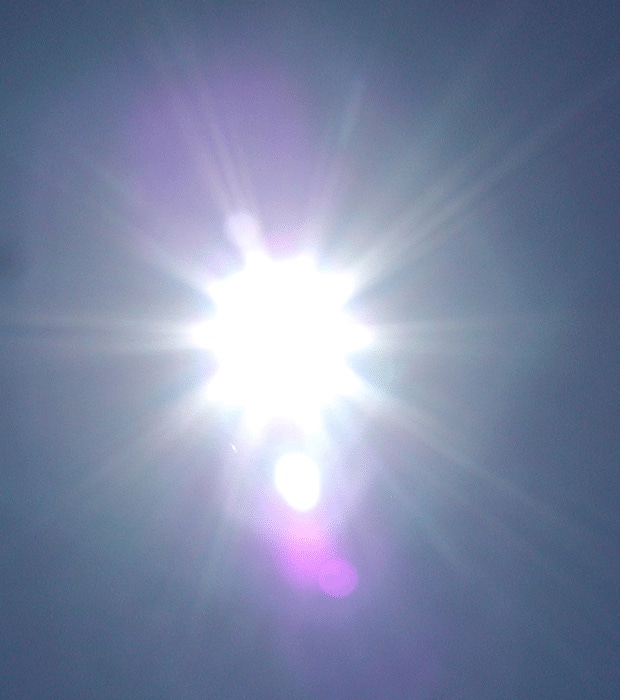December 29, 2011

The weather phenomenon known as La Niña is back for a encore, meaning an increased likelihood of a drier and warmer winter and spring for the Southeastern U.S., according to the winter seasonal agricultural outlook from the Southeast Climate Consortium (SECC), a coalition of six universities, including Florida State University, University of Florida, University of Miami, University of Georgia, Auburn University and University of Alabama-Huntsville.
For Florida, central and lower Alabama, and central and southern Georgia, this could mean that rainfall will be 40 to 60 percent lower than normal and temperatures three to four degrees warmer than normal during this period, which covers from November through March.
According to the SECC, El Niño and La Niña events tend to develop during April-June and tend to reach maximum strength during December-February. Typically, they persist for nine to 12 months.
La Niña conditions take place when surface water temperatures in the tropical Pacific Ocean along the equator turns colder than normal. La Niña can be thought as the opposite of El Niño conditions, in which the same area of the Pacific is warmer than normal.
La Niña events may last more than one year. And, in fact, they do tend to last longer on average than El Niño events, states the SECC.
Examples of events that lasted longer than one year include the La Niñas of
1954-56 (extreme drought in the Southeastern U.S.), 1973-75, and 1999-2001.This year is the second year of a la Niña pattern that started in July of 2010 and returned after a brief period of neutral conditions during the summer.
Although La Niña events are never the same, drier than normal conditions are generally observed in most of the Southern U.S., according to the outlook.
The current drought outlook for October 2011 through January of 2012 published by the NOAA Climate Prediction Center (CPC) confirms this trend signaling for drier conditions in most of the same areas.
Predicted impact on crops
The SECC predicts the following potential impacts of the current La Niña on crops:
Winter Vegetables: Tomato and green peppers generally yield more during La Niña years than during Neutral or El Niño years. Dry weather generally decreases fungal and bacterial diseases and help growers reduce the number of fungicide applications.
However, viruses caused by thrips (tomato spotted wilt virus) and white fly (tomato yellow leaf curl) are problems. High nighttime temperatures (above 65 degrees F.) can be a problem for fruit setting. Tomato yields are on average about 10 percent higher during La Niña years and 15to 20 percent lower during El Niño years.
Small Grains: In South Carolina and Alabama, wheat usually performs better during La Niña years than El Niño years. Wet seasons delay planting and affect crop yield potential. Anaerobic conditions caused by a water-logged soil during an El Niño year reduces root growth and results in nitrogen and potassium deficiencies.
Summer row crops: La Niña impacts are less evident on annual summer crops since its strongest signal occurs during fall, winter and spring.
Warm conditions may help certain pests and diseases.
Warm, dry winter conditions may increase the abundance of flower thrips. Yellow mustard and wild pansy are ideal hosts for thrips, and a warm winter may provide ideal growing conditions for these and many other host plants.
Warm conditions also may help soybean rust over-winter on kudzu in south Georgia and throughout the Panhandle of Florida.
If conditions are dry during the spring, it may be best to kill cover crops earlier in order to preserve more moisture in the soil.
If La Niña conditions persist into the spring next year or conditions return to neutral, then corn growers in North Carolina may want to consider delaying planting into May.
A recent study has indicated that planting as early as possible during an El Niño event may reduce the risk of drought stress during the critical pollination and grain-setting period, whereas waiting to plant until mid-May may reduce this risk during a La Niña or neutral phase.
These differences are primarily due to differences in rainfall patterns during July in El Niño, La Niña and neutral events. The later planting is delayed, the more important late-season insect control becomes.
Pastures: Success of winter pastures depends on rainfall. This is especially true when over-seeding. In central and south peninsular Florida, over-seeding of cool-season annuals into a established grass sod often fails due to insufficient soil moisture, and this is generally not recommended unless irrigation is available since dry conditions can be exacerbated during La Niña seasons.
Temperate fruits: Seasonal climate variability impacts deciduous fruit production mainly through changes in the satisfaction of dormancy that occurs by the accumulation of chilling hours (temperature at or below 45 degrees F.) and changes in the accumulation of heat units that promote flowering and fruit development. Also affected can be the extent of the threat from freeze damage during flower and fruit development, and the timing and severity of diseases and pests.
La Niña conditions developed later this year and may not result in significant decrease in overall chill accumulation.
About the Author(s)
You May Also Like




